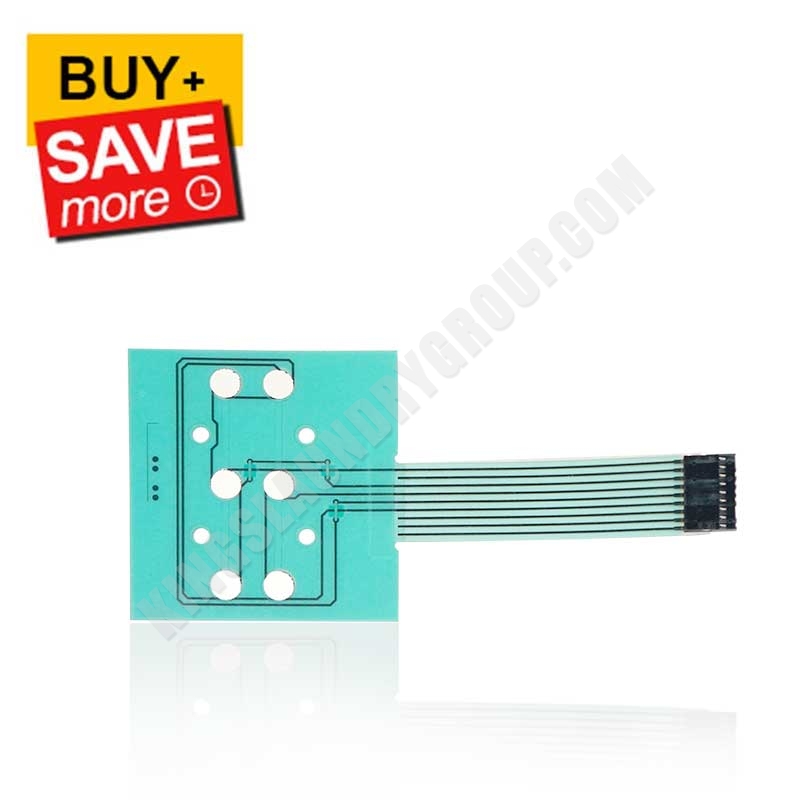Why Choosing the Right Membrane Switch Is Vital for Your Item Layout
Why Choosing the Right Membrane Switch Is Vital for Your Item Layout
Blog Article
How Membrane Layer Switches Contribute to the Resilience of Electronic Control Panels
Membrane layer switches play a vital duty in boosting the sturdiness of electronic control panels, mostly with their multi-layered building which gives efficient defense against environmental aspects such as moisture and dirt. The lack of relocating components considerably lowers the probability of mechanical failures, making membrane switches over ideal for demanding applications.
Definition of Membrane Buttons

Membrane layer switches are made to be slim and light-weight, making them suitable for applications where space is restricted. They can be produced in different forms, sizes, and colors, supplying adaptability in design that satisfies aesthetic and functional demands. Furthermore, membrane switches can incorporate numerous technologies, such as tactile comments and LED indicators, enhancing individual experience.
Due to their construction, membrane layer buttons are commonly resistant to dirt, wetness, and general wear, contributing to their resilience in requiring environments. Their smooth layout not only helps with simple cleaning but likewise reduces the danger of mechanical failure, making them a favored choice for makers seeking dependable individual interfaces in their digital control board.
Defense Against Ecological Aspects
The design of membrane changes naturally offers a degree of protection versus different environmental factors, which is essential for preserving functionality in tough conditions - Membrane Switch. These switches are generally built with layers of flexible materials that shield inner elements from dampness, dust, and contaminants. By enveloping the wiring, membrane changes minimize the threat of brief circuits and deterioration, which can dramatically harm performance
Moreover, making use of robust adhesives and sealers throughout manufacturing boosts their resistance to ecological challenges. Membrane buttons can sustain direct exposure to chemicals and solvents, making them ideal for industries such as food processing and medical care, where hygiene and sanitation are vital. Their smooth surface area design also stops the buildup of dust and bacteria, assisting in much easier cleaning and maintenance.
Temperature level fluctuations are an additional environmental issue, and membrane layer buttons are crafted to function successfully throughout a wide variety of temperatures (Membrane Switch). This versatility ensures that control panels stay functional in numerous setups, from commercial atmospheres to consumer electronics
Effect On Individual Communication
Customer interaction with electronic control board is considerably influenced by the style and functionality of membrane buttons. These buttons give a responsive user interface that boosts the general individual experience, enabling intuitive navigating and control. Their receptive nature guarantees that users get prompt feedback upon activation, which is important for jobs needing accuracy and performance.
Moreover, the smooth surface area of membrane layer changes promotes very easy cleaning and upkeep, advertising customer self-confidence in the reliability of the interface. check out here This tidiness is specifically essential in environments where hygiene is extremely important, such as clinical or food processing setups. Additionally, the compact and light-weight style of membrane layer switches over adds to the aesthetic allure of control board, urging individual involvement through a modern-day and streamlined look.
Moreover, the integration of aesthetic elements, such as printed icons and backlighting, helps customers swiftly determine features, lowering the learning contour related to brand-new tools. Therefore, customers can run gadgets better, leading to boosted efficiency and fulfillment. In summary, membrane layer switches play an essential duty in enhancing user websites communication by incorporating functionality, visual appeals, and convenience of use, eventually causing boosted operational efficiency.
Design Adaptability and Customization
Style flexibility and personalization are essential elements of membrane buttons, enabling manufacturers to tailor electronic control panels to specific applications and individual demands. This adaptability permits the assimilation of various style components, such as colors, graphics, and textures, which can enhance the visual appeal and user involvement of the control panel.
Membrane layer buttons can be customized in shapes and size, accommodating a vast array of gadgets and applications, from commercial equipment to consumer electronic devices. This adaptability makes sure that suppliers can create intuitive user interfaces that align with customer assumptions and functional needs. Furthermore, the capability to include special attributes such as backlighting or responsive responses further boosts functionality, permitting a more interactive experience.
Furthermore, the manufacturing process for membrane switches over sustains the quick prototyping of designs, allowing makers to repeat and refine their principles rapidly. This capability not just accelerates the development timeline yet likewise makes sure that the end product meets specific useful and visual requirements.

Cost-Effectiveness and Longevity
Cost-effectiveness and longevity are considerable advantages of membrane buttons, making them an attractive choice for manufacturers and end-users alike. These switches are commonly more economical to generate than conventional mechanical buttons, primarily as a result of their simplified production processes and the decreased number of parts called for. This expense advantage expands not just to initial manufacturing but additionally to long-term functional expenditures, as membrane layer switches usually require much less upkeep and have a lower failure rate.
Furthermore, the durability of membrane layer switches adds to their overall value. Built from durable materials, they are resistant to environmental variables such as moisture, dirt, and chemicals, my sources which can cause premature wear in various other button kinds. The absence of moving parts decreases mechanical failing, allowing membrane layer switches over to keep performance over expanded durations.
This toughness is specifically beneficial in applications calling for constant efficiency under requiring conditions, such as clinical tools and commercial equipment. Eventually, the combination of cost-effectiveness and longevity makes membrane switches an economically viable choice for producers, offering trusted options that hold up against the examination of time while maximizing budgetary factors to consider.
Conclusion
In verdict, membrane layer switches substantially boost the sturdiness of digital control panels with their durable construction and safety attributes - Membrane Switch. In general, membrane switches over represent a trustworthy and economical option for enhancing the long life and functionality of electronic control systems.
Report this page